The compact SUV segment is heating up, with contenders like the Hyundai Tucson and Toyota RAV4 leading the charge. Both vehicles have consistently received high praise for their design, features, and reliability. But how do they stack up against each other? Let’s dive into a detailed comparison that highlights their technical aspects and innovations.
Hyundai Tucson vs Toyota RAV4 – Which one offers the better deal?
Compare performance, boot capacity, efficiency and price at a glance.
Find out which car is the better choice for you – Hyundai Tucson or Toyota RAV4?
Design and Dimensions
The Hyundai Tucson measures 4510 mm in length, 1865 mm in width, and 1650 mm in height, while the Toyota RAV4 is slightly larger, with dimensions of 4600 mm in length, 1855 mm in width, and 1685 mm in height. Despite the RAV4’s larger dimensions, both SUVs offer a spacious interior that comfortably seats five passengers.
Engine Options and Performance
Under the hood, the Tucson boasts a variety of engine types, including Diesel MHEV, Petrol MHEV, full hybrids, and plug-in hybrids, with power outputs ranging from 136 to 252 HP. The RAV4, however, specializes in full hybrid and plug-in hybrid powertrains, achieving power ratings of up to 306 HP. The Tucson offers a top speed of up to 194 km/h, which is comparable with the RAV4’s 180 km/h cap.
Fuel Efficiency
When it comes to fuel consumption, the Tucson presents an impressively low figure, reaching as efficient as 5.1 L/100 km for its diesel variant. On the other hand, the RAV4 offers an equally impressive consumption at around 5.6 L/100 km for its hybrid variants, while its plug-in hybrid model can achieve remarkable electric ranges up to 75 km. Meanwhile, the Tucson's electric range is slightly lower at 65-70 km depending on the configuration.
Acceleration and Handling
The Tucson demonstrates competitive performance with acceleration times ranging from 7.9 to 11.6 seconds for the 0-100 km/h sprint across its varied engine offerings. The RAV4 shines in this respect, showcasing swift figures between 6 to 8.4 seconds, making it particularly appealing for those who value quick responsiveness.
Interior Features and Innovations
Both SUVs come equipped with a myriad of modern features. The Hyundai Tucson emphasizes a sleek, tech-forward cabin with advanced infotainment systems, user-friendly interfaces, and practical storage solutions. In contrast, the Toyota RAV4 integrates a more rugged design with a focus on durability and reliability but also includes state-of-the-art technology, with intuitive controls that enhance the driving experience.
Safety Systems
Safety remains a top priority for both models. The Tucson is equipped with a suite of Hyundai SmartSense technologies, featuring adaptive cruise control, lane-keeping assist, and blind-spot monitoring. The RAV4 stands its ground with Toyota Safety Sense, which includes automatic emergency braking, adaptive cruise control, and a pre-collision system designed to mitigate accidents.
Practicality and Cargo Space
Practicality is crucial in the SUV segment, and here the RAV4 slightly edges out with a maximum trunk capacity of 580 L, compared to Tucson's maximum of 620 L across its variants. Both vehicles offer flexible seating configurations and ample cargo space for daily errands or weekend adventures.
Conclusion: Which SUV Reigns Supreme?
In the clash of the compact titans, the Hyundai Tucson and Toyota RAV4 each have their strengths. The Tucson excels in customization options, innovative technology, and fuel efficiency, while the RAV4 shines in performance, safety features, and practicality. Ultimately, the choice depends on individual priorities—whether you prefer Hyundai's modern design or Toyota's reliability and power.
Here’s where it gets real: The technical differences in detail
Costs and Efficiency:
When it comes to price and running costs, the biggest differences usually appear. This is often where you see which car fits your budget better in the long run.
Hyundai Tucson has a somewhat advantage in terms of price – it starts at 30600 £, while the Toyota RAV4 costs 35100 £. That’s a price difference of around 4500 £.
Both cars consume an average of 1 L per 100 km – no difference here.
As for range, the Toyota RAV4 performs barely noticeable better – achieving up to 75 km, about 5 km more than the Hyundai Tucson.
Engine and Performance:
Under the bonnet, it becomes clear which model is tuned for sportiness and which one takes the lead when you hit the accelerator.
When it comes to engine power, the Toyota RAV4 has a to a small extent edge – offering 306 HP compared to 252 HP. That’s roughly 54 HP more horsepower.
In acceleration from 0 to 100 km/h, the Toyota RAV4 is noticeable quicker – completing the sprint in 6 s, while the Hyundai Tucson takes 7.90 s. That’s about 1.90 s faster.
In terms of top speed, the Hyundai Tucson performs slight better – reaching 194 km/h, while the Toyota RAV4 tops out at 180 km/h. The difference is around 14 km/h.
Space and Everyday Use:
Cabin size, boot volume and payload all play a role in everyday practicality. Here, comfort and flexibility make the difference.
Both vehicles offer seating for 5 people.
In curb weight, Hyundai Tucson is to a small extent lighter – 1520 kg compared to 1745 kg. The difference is around 225 kg.
In terms of boot space, the Hyundai Tucson offers barely noticeable more room – 620 L compared to 580 L. That’s a difference of about 40 L.
In maximum load capacity, the Hyundai Tucson performs hardly perceptible better – up to 1799 L, which is about 109 L more than the Toyota RAV4.
When it comes to payload, Toyota RAV4 minimal takes the win – 600 kg compared to 545 kg. That’s a difference of about 55 kg.
Who wins the race?
The Toyota RAV4 proves to be leaves the rival little chance and therefore becomes our DriveDuel Champion!
Toyota RAV4 is the better all-rounder in this comparison.
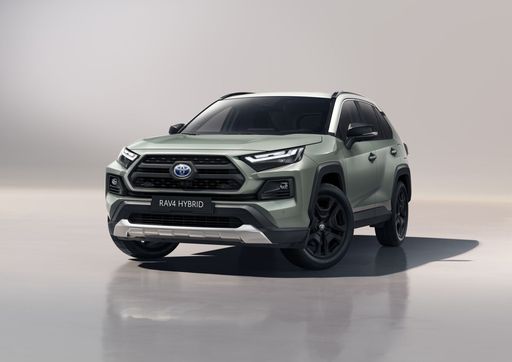 @ Toyota Motor Corporation
@ Toyota Motor Corporation
Toyota RAV4
Hyundai Tucson
Hyundai Tucson marries bold, sculpted looks with a clever, roomy cabin that feels smarter than its price tag suggests. It's composed on the road, easy to live with day-to-day, and a sensible choice for buyers who want SUV style without the showroom theatrics.
details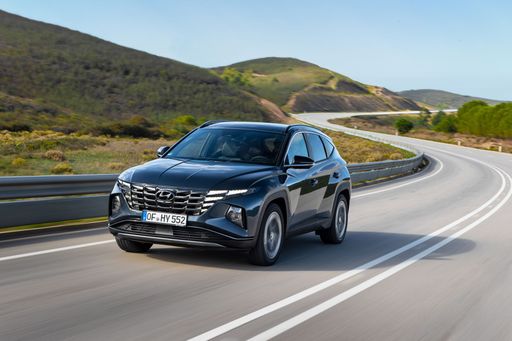 @ Hyundai Motor Company
@ Hyundai Motor Company
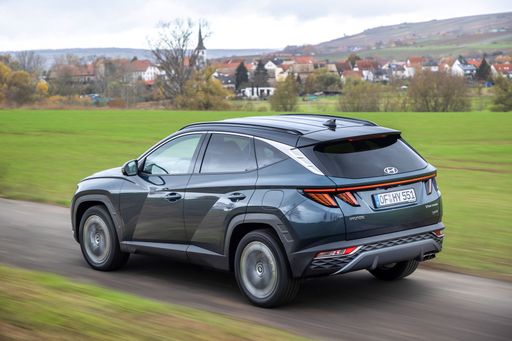 @ Hyundai Motor Company
@ Hyundai Motor Company
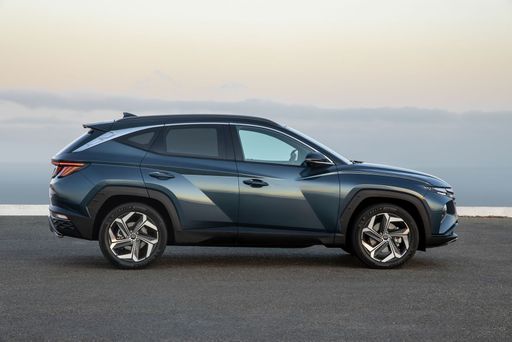 @ Hyundai Motor Company
@ Hyundai Motor Company
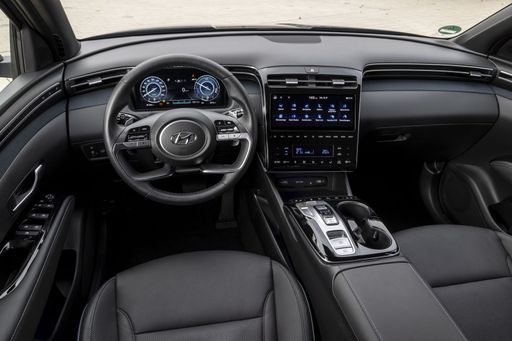 @ Hyundai Motor Company
@ Hyundai Motor Company
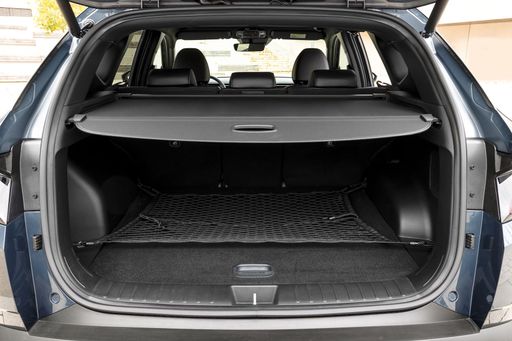 @ Hyundai Motor Company
@ Hyundai Motor Company
Toyota RAV4
The Toyota RAV4 feels like a sensible friend on the road, marrying dependable practicality with a dash of SUV personality that keeps daily driving from turning dull. Comfortable and easy to live with, it looks tough without shouting and quietly gets the job done — a sensible pick for buyers who want versatility without drama.
details @ Toyota Motor Corporation
@ Toyota Motor Corporation
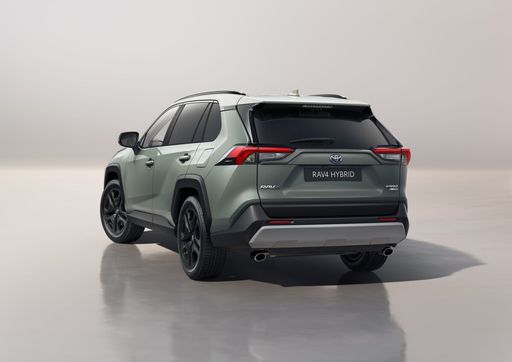 @ Toyota Motor Corporation
@ Toyota Motor Corporation
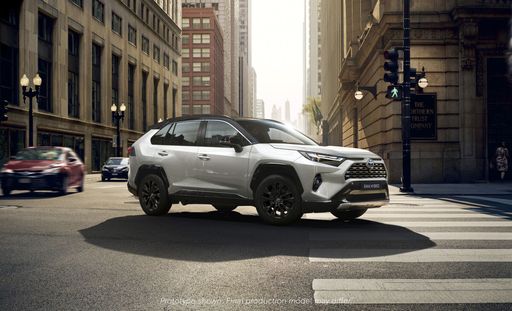 @ Toyota Motor Corporation
@ Toyota Motor Corporation
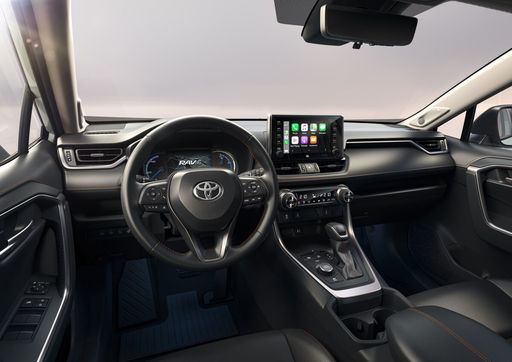 @ Toyota Motor Corporation
@ Toyota Motor Corporation
 @ Hyundai Motor Company
@ Hyundai Motor Company
|
 @ Toyota Motor Corporation
@ Toyota Motor Corporation
|
|
|
|
Costs and Consumption |
|
|---|---|
|
Price
30600 - 46300 £
|
Price
35100 - 55700 £
|
|
Consumption L/100km
1 - 6.9 L
|
Consumption L/100km
1 - 5.6 L
|
|
Consumption kWh/100km
-
|
Consumption kWh/100km
-
|
|
Electric Range
64 - 70 km
|
Electric Range
75 km
|
|
Battery Capacity
-
|
Battery Capacity
-
|
|
co2
22 - 156 g/km
|
co2
22 - 128 g/km
|
|
Fuel tank capacity
42 - 54 L
|
Fuel tank capacity
55 L
|
Dimensions and Body |
|
|---|---|
|
Body Type
SUV
|
Body Type
SUV
|
|
Seats
5
|
Seats
5
|
|
Doors
5
|
Doors
5
|
|
Curb weight
1520 - 1889 kg
|
Curb weight
1745 - 1910 kg
|
|
Trunk capacity
546 - 620 L
|
Trunk capacity
520 - 580 L
|
|
Length
4510 - 4520 mm
|
Length
4600 mm
|
|
Width
1865 mm
|
Width
1855 mm
|
|
Height
1650 mm
|
Height
1685 mm
|
|
Max trunk capacity
1721 - 1799 L
|
Max trunk capacity
1604 - 1690 L
|
|
Payload
525 - 545 kg
|
Payload
390 - 600 kg
|
Engine and Performance |
|
|---|---|
|
Engine Type
Diesel MHEV, Petrol MHEV, Petrol, Full Hybrid, Plugin Hybrid
|
Engine Type
Full Hybrid, Plugin Hybrid
|
|
Transmission
Automatic, Manuel
|
Transmission
Automatic
|
|
Transmission Detail
Dual-Clutch Automatic, Manual Gearbox, Automatic Gearbox
|
Transmission Detail
CVT
|
|
Drive Type
Front-Wheel Drive, All-Wheel Drive
|
Drive Type
Front-Wheel Drive, All-Wheel Drive
|
|
Power HP
136 - 252 HP
|
Power HP
218 - 306 HP
|
|
Acceleration 0-100km/h
7.9 - 11.6 s
|
Acceleration 0-100km/h
6 - 8.4 s
|
|
Max Speed
180 - 194 km/h
|
Max Speed
180 km/h
|
|
Torque
265 - 367 Nm
|
Torque
-
|
|
Number of Cylinders
4
|
Number of Cylinders
4
|
|
Power kW
100 - 185 kW
|
Power kW
160 - 225 kW
|
|
Engine capacity
1598 cm3
|
Engine capacity
2487 cm3
|
General |
|
|---|---|
|
Model Year
2024
|
Model Year
2024 - 2025
|
|
CO2 Efficiency Class
E, F, D, B
|
CO2 Efficiency Class
D, B
|
|
Brand
Hyundai
|
Brand
Toyota
|
What drive types are available for the Hyundai Tucson?
Available configurations include Front-Wheel Drive or All-Wheel Drive.
The prices and data displayed are estimates based on German list prices and may vary by country. This information is not legally binding.
